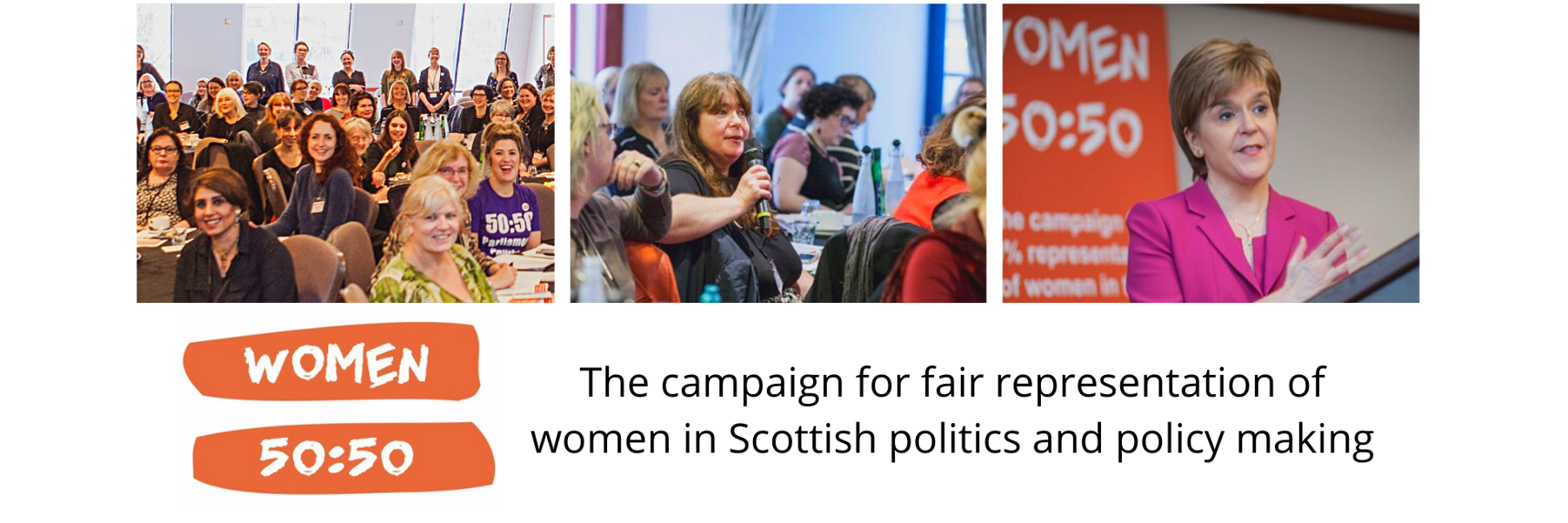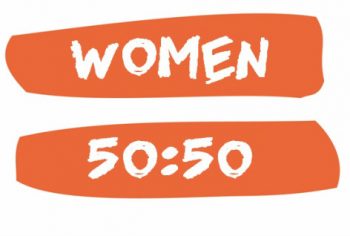Yesterday, the Scottish Parliament voted in favour of having at least 50% women on all public boards (88 in favour, 28 against). Public bodies need to work towards meeting that target by 2022. At Women 50:50 we have been campaigning for this, along with women’s representation in politics, since 2014. Here is a summary of a few of our thoughts on this and what need to happen next:
Why does having women on public boards matter?
It might not seem like that big a deal, but there is a bigger picture here. Firstly, public boards make key decisions about public services which are disproportionately used by women. This bill will impact the boards of the key agencies such as health boards, enterprise agencies, the Scottish Police Authority and the Scottish Fire and Rescue Service. These are agencies which make decisions about critical aspects of our lives; our access to health care and our justice system, it is right that these decisions are equally influenced by women. Secondly, despite what you might think, having a woman who is First Minister does not automatically mean women are more likely to be in leadership positions, nor does it fully tackle the idea of leadership being a male characteristic. That can never and should never rest on one woman’s shoulders. This bill will increase the number of women in these roles and, we hope, help tackle leadership gender bias.
But this is not a silver bullet, there is no such thing for women’s social, cultural and economic inequality. To tackle this, we need multiple interventions, we need to tackle the pay gap, we need to challenge and change the justice system for victims of sexual violence, we need to take on media sexism, we need to advocate for the disproportionate number of women who are unpaid carers and we need a labour market that values the sectors where women are over-represented, undervalued and underpaid. But this is a progressive step, illustrating that steps to create parity can and must be achieved.
This is also the first step of three for Women 50:50, it is important because it is the first time the Scottish Parliament has used this power to balance decision makers and gives us the foundations to fight for, and win, the same outcome to have political parties field at least 50% women candidates. Making the ballot paper, the choice of decision makers, reflective of the society they seek to represent.
But the ratio of men to women isn’t so bad on public boards, do you really need legislation?
Yes, because progress in not linear. In 2007 we had 40% women MSPs, today we have 35%. The purpose of legislating for this change is to ensure we do slip behind. The number of women we have on public boards is due to this issue being in the spotlight, we can’t afford for this to drop of the agenda and therefore, for fair representation to drop off the agenda. This legislation prevents that. This legislation is also about boards as individual entities, not simply a 50% target as a collective. This matters because many boards are still male dominated, despite the overall number of women board members increasing.
What next: We, along with other equalities organisations (Engender, Close the Gap, Scottish Trans and the Equality Network) wrote to the Equalities and Human Rights Committee last week to recommend ways in which the implementation of this bill. Here’s what we think needs to happen now:
- Accountability : whilst there are no sanctions attached to the bill, there are reporting duties which would require boards to report progress to the Scottish Parliament. The bill only works if there is accountability involved in the 2022 target.
- Good Guidance: We need guidance to be clear and unambiguous, we need public boards to be knowledgeable in how to not only attract women to be board members, but ensure that cultures on these boards are inclusive and that there is an understanding of this bill and gender inequality by board members.
- Representation of BME, Disabled, working class, LGBT women: This bill is not about making thing even easier for those who would have always had access to these positions. Women in Scotland are BME, working class, LGBT, disabled – we will be focused on ensuring public bodies are truly being represented of the diversity of Scotland’s women. Without this, we cannot call this progress for women. We have advocated strongly for this to be included in guidance and for intersectional data on board membership to be provided in reporting, allowing us to review and better hold boards to account.
This blog was written by Talat Yaqoob, Chair and Co-Founder of Women 50:50.

